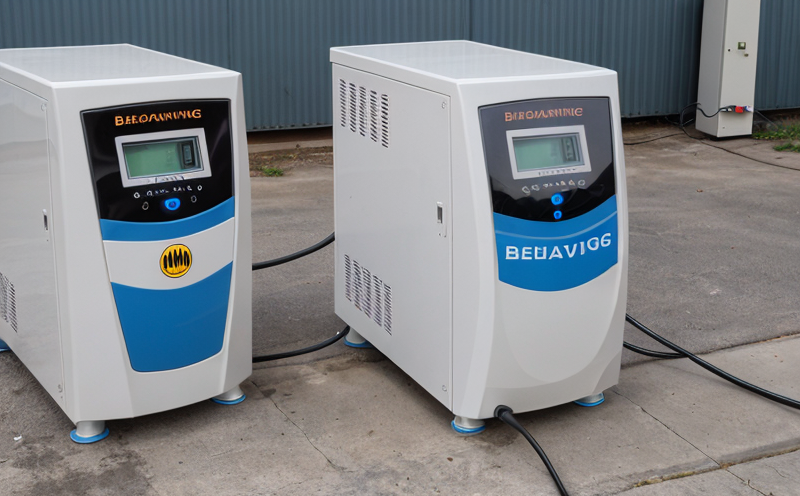UL 9540 Charging and Discharging Behavior Testing of Energy Storage Systems
The UL 9540 standard is a critical benchmark in the energy storage systems (ESS) industry, ensuring that ESS products are safe and reliable. This test evaluates the charging and discharging behavior of batteries to confirm their compliance with safety regulations.
Charging and discharging behavior testing involves simulating real-world conditions under which ESS units operate. The aim is to identify potential hazards such as overheating, over-discharge, or abnormal voltage changes that could lead to a fire or explosion. This test is particularly important for ensuring the safety of large-scale energy storage systems used in residential, commercial, and industrial settings.
The UL 9540 testing protocol includes several key steps: charging the battery until it reaches its maximum capacity, holding it at that level for a specified time, then discharging it completely. The test is conducted under controlled conditions to monitor temperature, voltage, current, and other relevant parameters throughout the process.
For accurate and reliable testing, specimens must be prepared according to strict protocols. This includes ensuring the battery cells are clean and free from any external damage before testing begins. During the charging phase, the rate of charge is carefully monitored to prevent overcharging which could lead to thermal runaway or other hazards.
Once charged, the battery undergoes a period of stabilization where it remains at full charge for an extended period. This allows for any initial fluctuations in voltage and temperature to stabilize before discharge testing begins. The discharge phase is equally critical as it simulates real-world use scenarios such as power supply during peak demand periods.
Throughout both phases, sophisticated instrumentation records detailed data on the battery's performance including its maximum and minimum voltages, internal resistance, heat generation, and overall efficiency. This comprehensive dataset is then used to determine whether the ESS unit meets UL 9540 safety standards for charging and discharging behavior.
| Application Type | Test Focus |
|---|---|
| Data Centers | Ensuring reliable power supply during peak demand periods. |
| Homes | Providing backup power to prevent outages and ensure continuous operation. |
| Solar Farms | Storing excess solar energy for use during non-sunny periods. |
| Offshore Wind Farms | Stabilizing power supply to match variable wind generation. |
- Data Centers: Reliable backup power during peak demand periods.
- Homes: Backup power for preventing outages and ensuring continuous operation.
- Solar Farms: Storing excess solar energy to be used during non-sunny periods.
- Offshore Wind Farms: Stabilizing the variable power supply generated by wind turbines.
Why It Matters
The importance of UL 9540 testing cannot be overstated. Energy storage systems are becoming increasingly important as we move towards a more sustainable and resilient energy future. However, the high voltage and large capacity batteries used in these systems can pose significant risks if not properly managed.
By conducting UL 9540 tests, manufacturers ensure that their ESS products meet stringent safety standards which are essential for protecting users, workers, and the environment. These tests help to prevent accidents such as fires or explosions that could result from improper charging or discharging behavior of batteries.
The results of these tests provide valuable insights into the performance characteristics of different battery technologies under controlled conditions. This information is crucial for improving the design and manufacturing processes of ESS units, leading to safer and more efficient products.
Moreover, compliance with UL 9540 standards can also enhance marketability by demonstrating a commitment to quality and safety. This can be particularly important when competing in international markets where stringent regulations are enforced.
Industry Applications
| Application Type | Test Focus |
|---|---|
| Data Centers | Ensuring reliable power supply during peak demand periods. |
| Homes | Providing backup power to prevent outages and ensure continuous operation. |
| Solar Farms | Storing excess solar energy for use during non-sunny periods. |
| Offshore Wind Farms | Stabilizing power supply to match variable wind generation. |
Environmental and Sustainability Contributions
- Reducing reliance on fossil fuels by enabling renewable energy storage.
- Promoting the use of sustainable power generation methods such as solar and wind farms.
- Minimizing waste through efficient battery management systems that ensure maximum lifespan before recycling.





